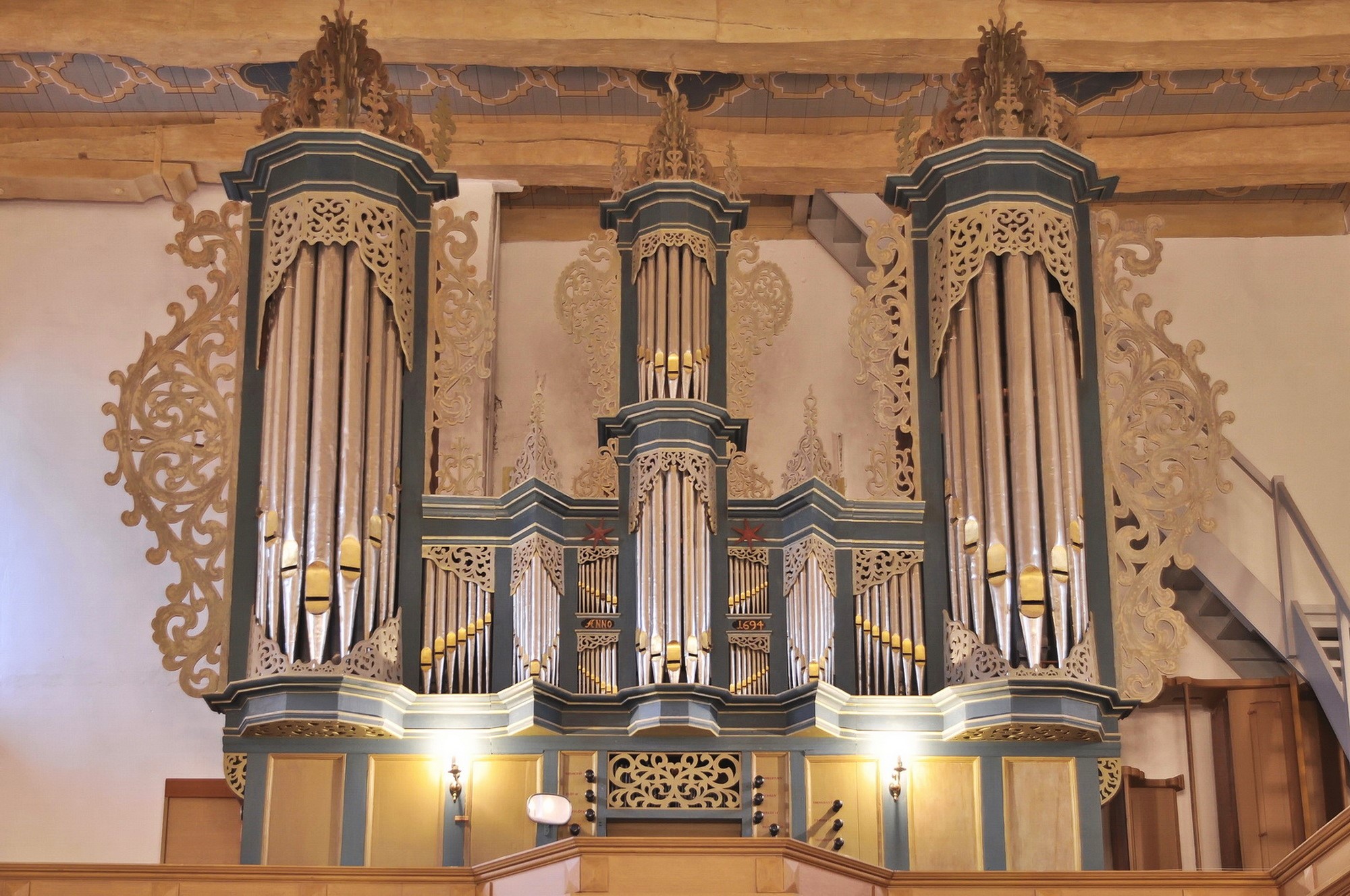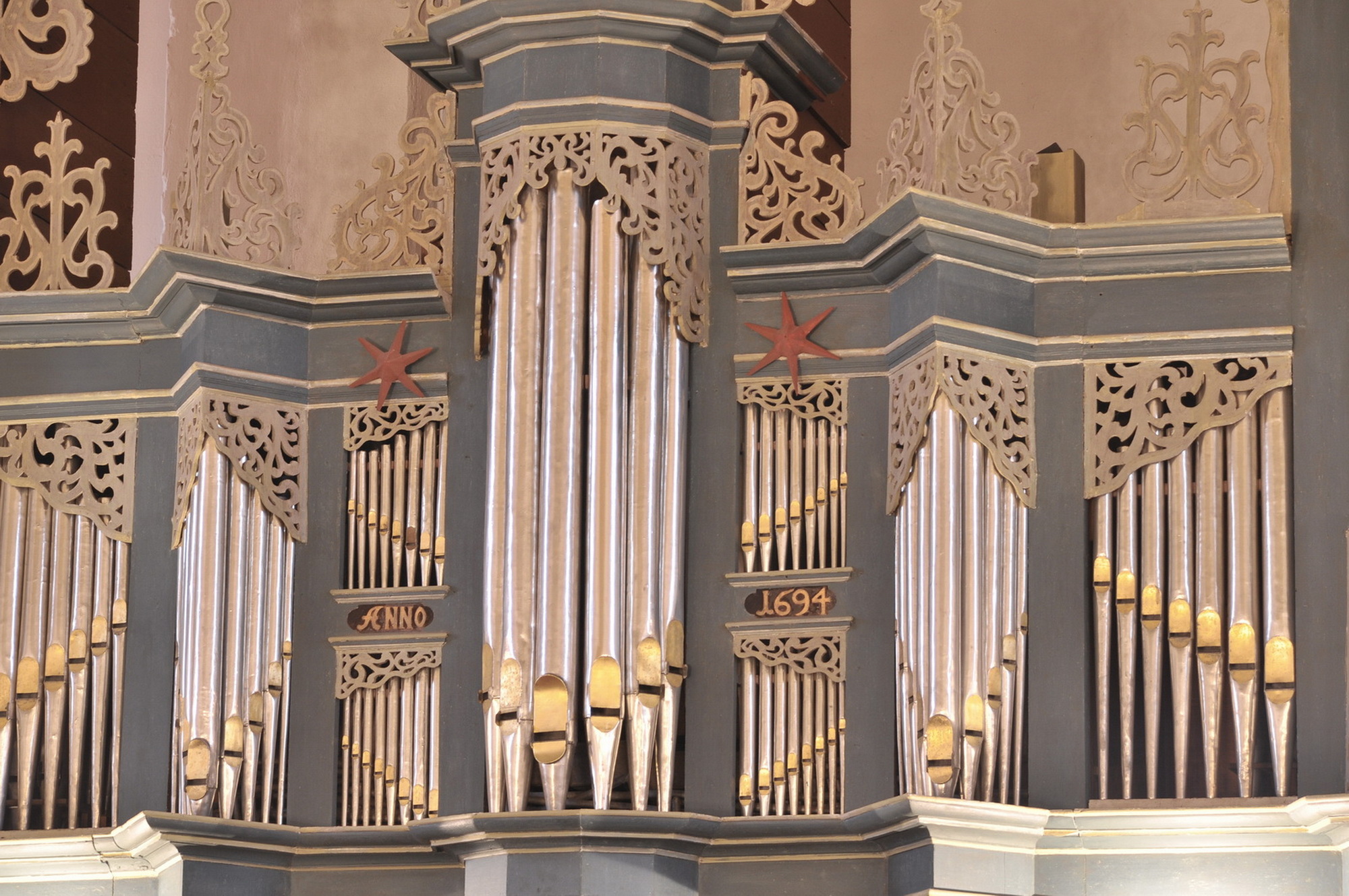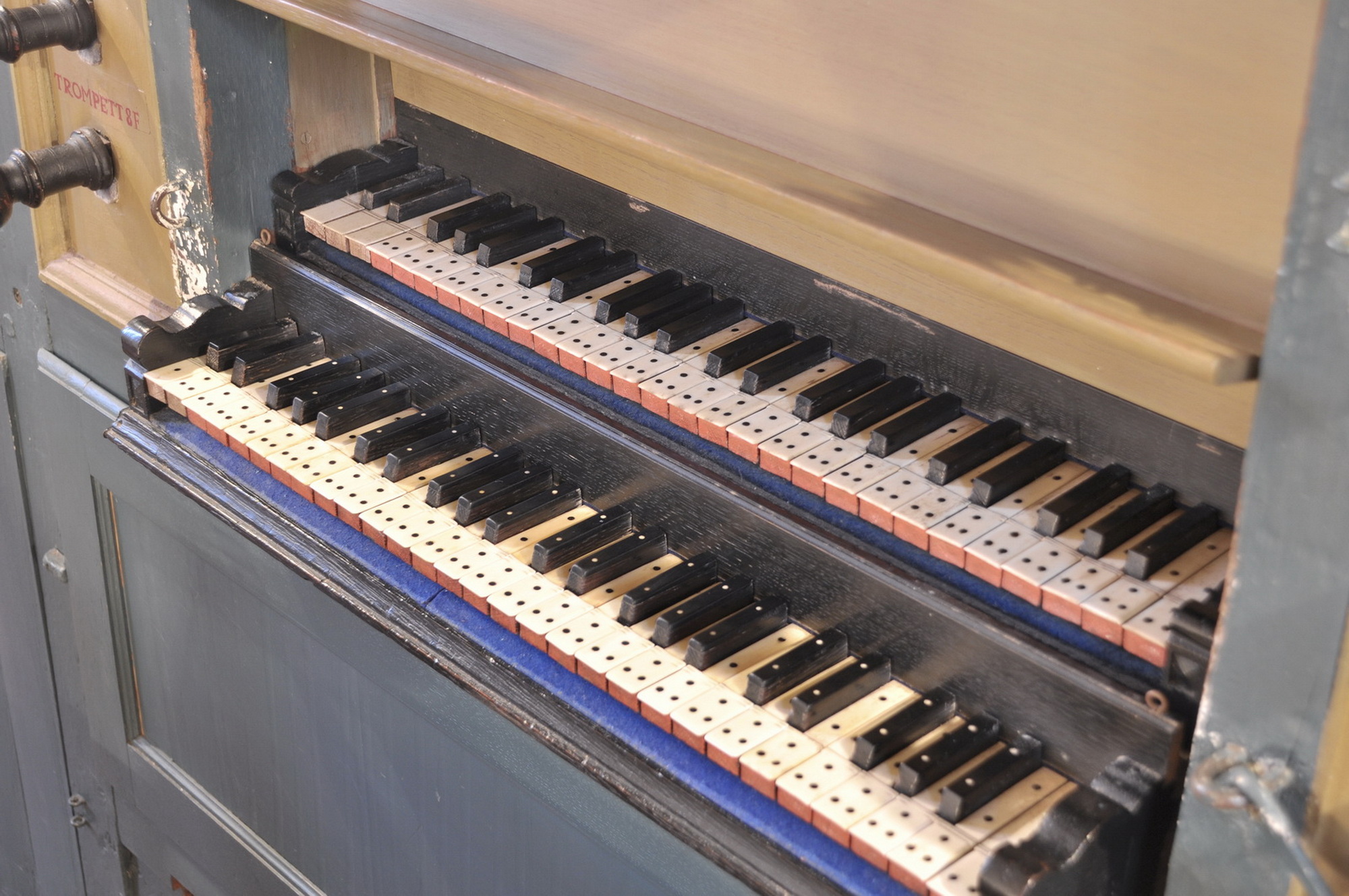Hohenkirchen, St. Sixtus- und Siniciuskirche
| Builder | J. Kayser |
|---|---|
| Year | ca. 1699 |
| Period/Style | Baroque |
| Stops | 21 |
| Keyboards | 2+P |
| Keyaction | tracker/mechanical |
| Tuning | 1/5 Comma Meantone at 466 Hz |
St. Sixtus und Sinicius Church in Hohenkirchen is a well-preserved example of a late Romanesque granite block construction from the first half of the 13th century. The church features a long, rectangular hall with a semicircular apse at the eastern end. The interior includes a wooden, flat-arched ceiling dating back to the 9th century, a richly adorned pulpit from 1628, and a 13th-century baptismal font. The church's architecture is complemented by a north-facing bell tower of the parallel-wall type, also from the 13th century, and an altar from 1620 crafted by the workshop of Ludwig Münstermann.
The organ, built by Joachim Kayser in 1694 and expanded in 1699, is a significant historical instrument. The organ's case and much of its original pipework have been preserved through various restorations, notably in 1974/75 by Alfred Führer. The organ's facade features imposing pedal towers and a split central tower, a unique design that allowed for the installation of a Principal 8' stop in the manual. Despite undergoing changes in the 18th and 19th centuries, the organ was carefully restored to its original baroque disposition, maintaining the integrity of Kayser's craftsmanship. The instrument is notable for its historical significance and its rich, vibrant sound, which continues to be a focal point in the church's musical life.
The organ, built by Joachim Kayser in 1694 and expanded in 1699, is a significant historical instrument. The organ's case and much of its original pipework have been preserved through various restorations, notably in 1974/75 by Alfred Führer. The organ's facade features imposing pedal towers and a split central tower, a unique design that allowed for the installation of a Principal 8' stop in the manual. Despite undergoing changes in the 18th and 19th centuries, the organ was carefully restored to its original baroque disposition, maintaining the integrity of Kayser's craftsmanship. The instrument is notable for its historical significance and its rich, vibrant sound, which continues to be a focal point in the church's musical life.
| Hauptwerk | Brustwerk | Pedal |
|---|---|---|
| Principal 8' | Gedackt 8' | Quintadena 16' |
| Gedackt 8' | Flöte 4' | Principal 8' |
| Oktave 4' | Spitzflöte 2' | Oktave 4' |
| Spitzflöte 4' | Terzian 2f | Mixtur 6f 2 2/3' |
| Quinte 3' | Sifflöte 1' | Trompete 8' |
| Oktave 2' | Cornett 2' | |
| Sesquialtera 2f | ||
| Sifflöte 1' | ||
| Mixtur 4-5f | ||
| Trompete 8' |
No Video/Audio samples available.
https://nomine.net/orgel/hohenkirchen-st-sixtus-und-sinicius/
 Pipe Organ Map
Pipe Organ Map


